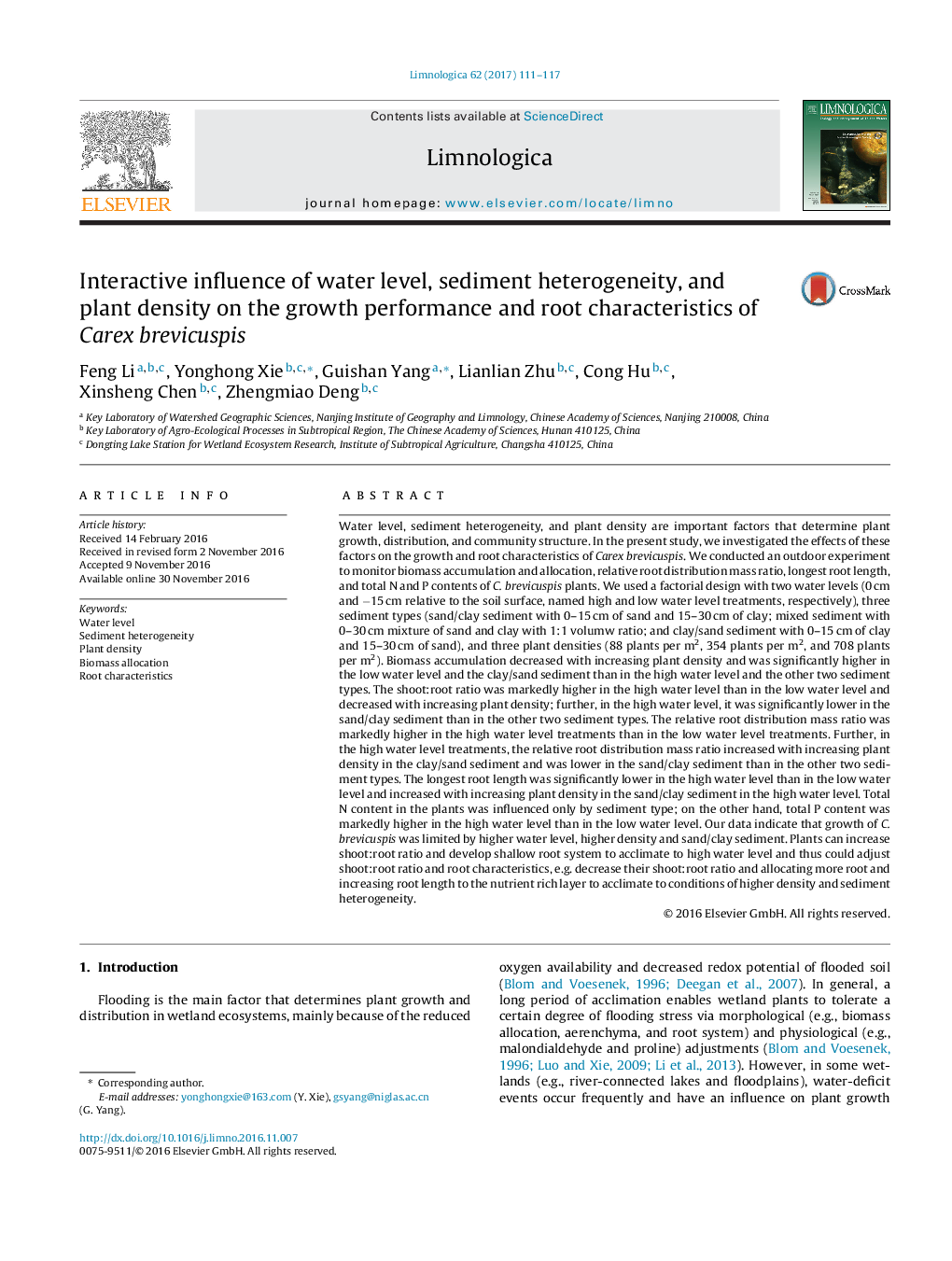| Article ID | Journal | Published Year | Pages | File Type |
|---|---|---|---|---|
| 5744895 | Limnologica - Ecology and Management of Inland Waters | 2017 | 7 Pages |
Water level, sediment heterogeneity, and plant density are important factors that determine plant growth, distribution, and community structure. In the present study, we investigated the effects of these factors on the growth and root characteristics of Carex brevicuspis. We conducted an outdoor experiment to monitor biomass accumulation and allocation, relative root distribution mass ratio, longest root length, and total N and P contents of C. brevicuspis plants. We used a factorial design with two water levels (0Â cm and â15Â cm relative to the soil surface, named high and low water level treatments, respectively), three sediment types (sand/clay sediment with 0-15Â cm of sand and 15-30Â cm of clay; mixed sediment with 0-30Â cm mixture of sand and clay with 1:1 volumw ratio; and clay/sand sediment with 0-15Â cm of clay and 15-30Â cm of sand), and three plant densities (88 plants per m2, 354 plants per m2, and 708 plants per m2). Biomass accumulation decreased with increasing plant density and was significantly higher in the low water level and the clay/sand sediment than in the high water level and the other two sediment types. The shoot:root ratio was markedly higher in the high water level than in the low water level and decreased with increasing plant density; further, in the high water level, it was significantly lower in the sand/clay sediment than in the other two sediment types. The relative root distribution mass ratio was markedly higher in the high water level treatments than in the low water level treatments. Further, in the high water level treatments, the relative root distribution mass ratio increased with increasing plant density in the clay/sand sediment and was lower in the sand/clay sediment than in the other two sediment types. The longest root length was significantly lower in the high water level than in the low water level and increased with increasing plant density in the sand/clay sediment in the high water level. Total N content in the plants was influenced only by sediment type; on the other hand, total P content was markedly higher in the high water level than in the low water level. Our data indicate that growth of C. brevicuspis was limited by higher water level, higher density and sand/clay sediment. Plants can increase shoot:root ratio and develop shallow root system to acclimate to high water level and thus could adjust shoot:root ratio and root characteristics, e.g. decrease their shoot:root ratio and allocating more root and increasing root length to the nutrient rich layer to acclimate to conditions of higher density and sediment heterogeneity.
